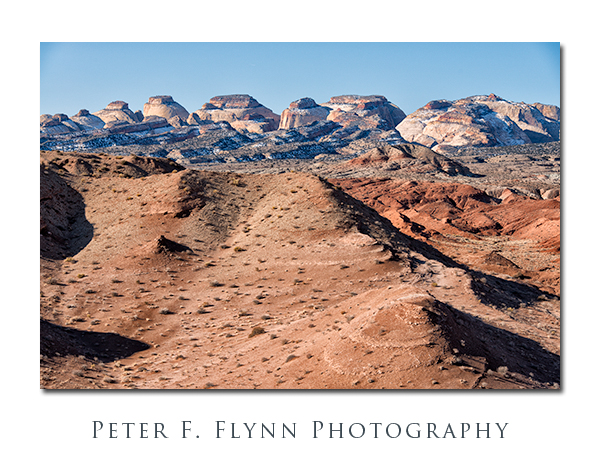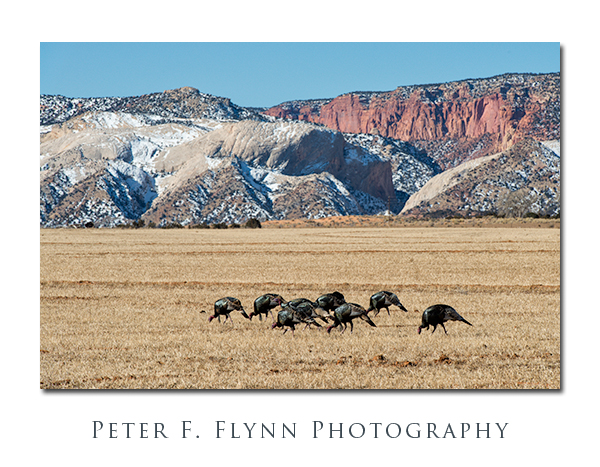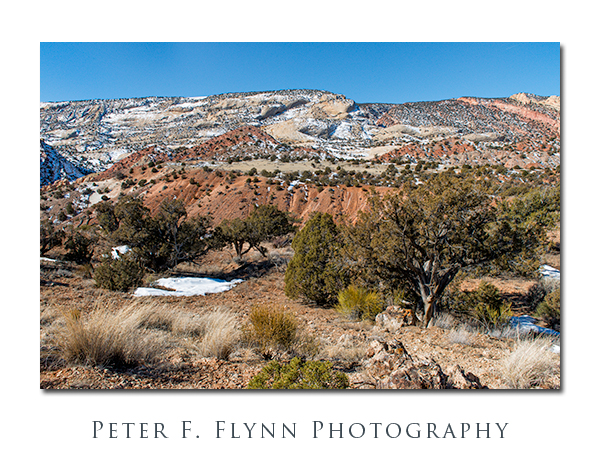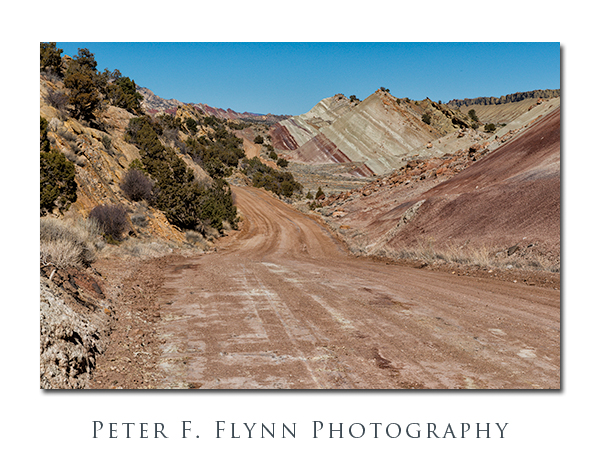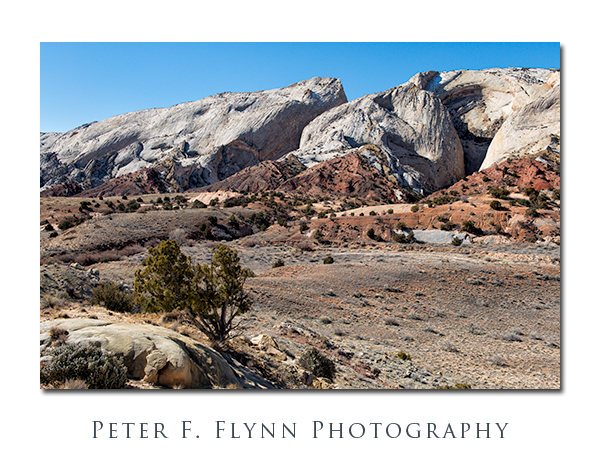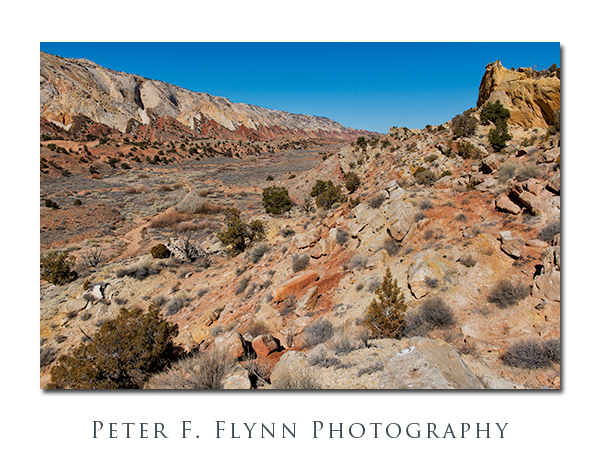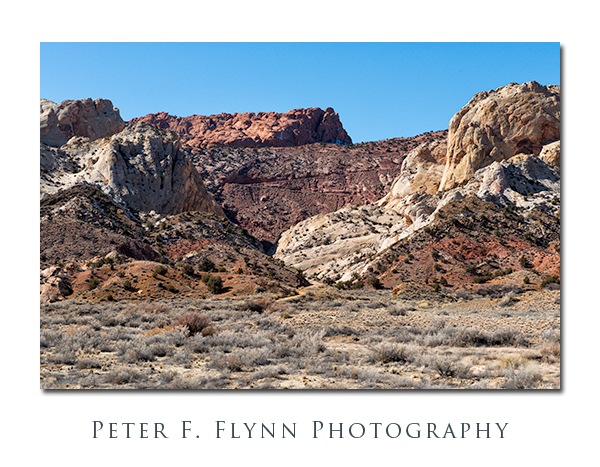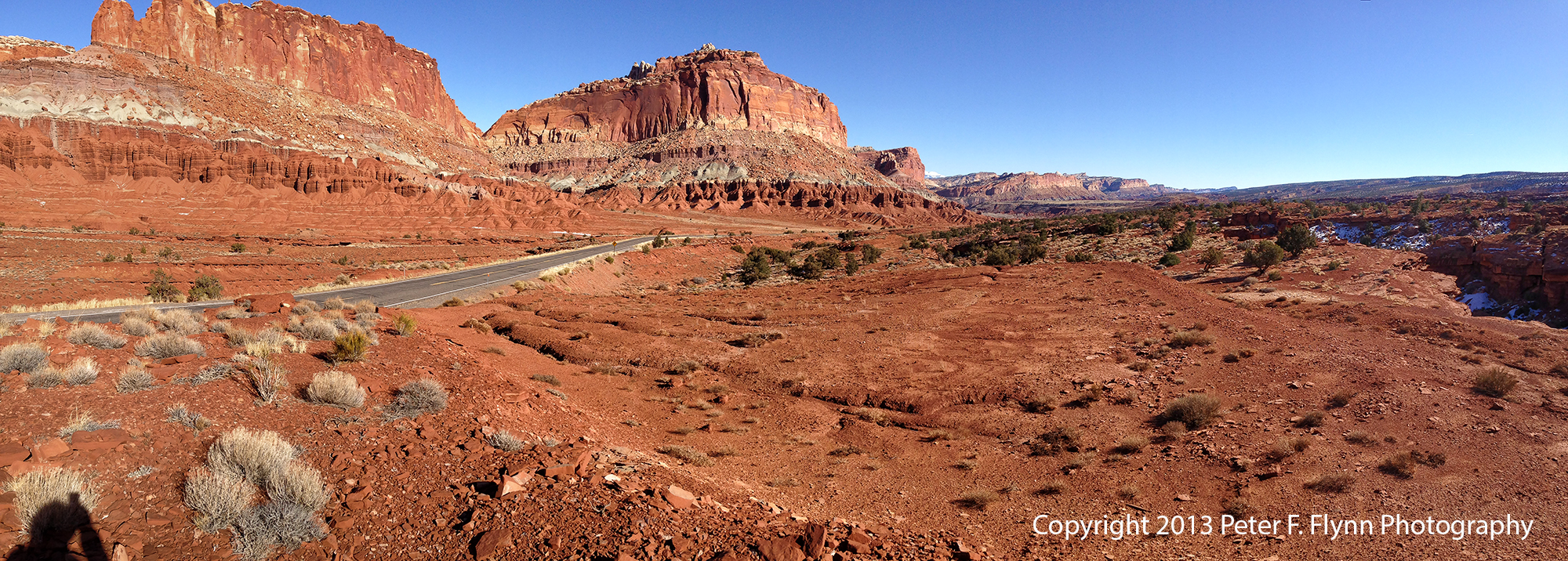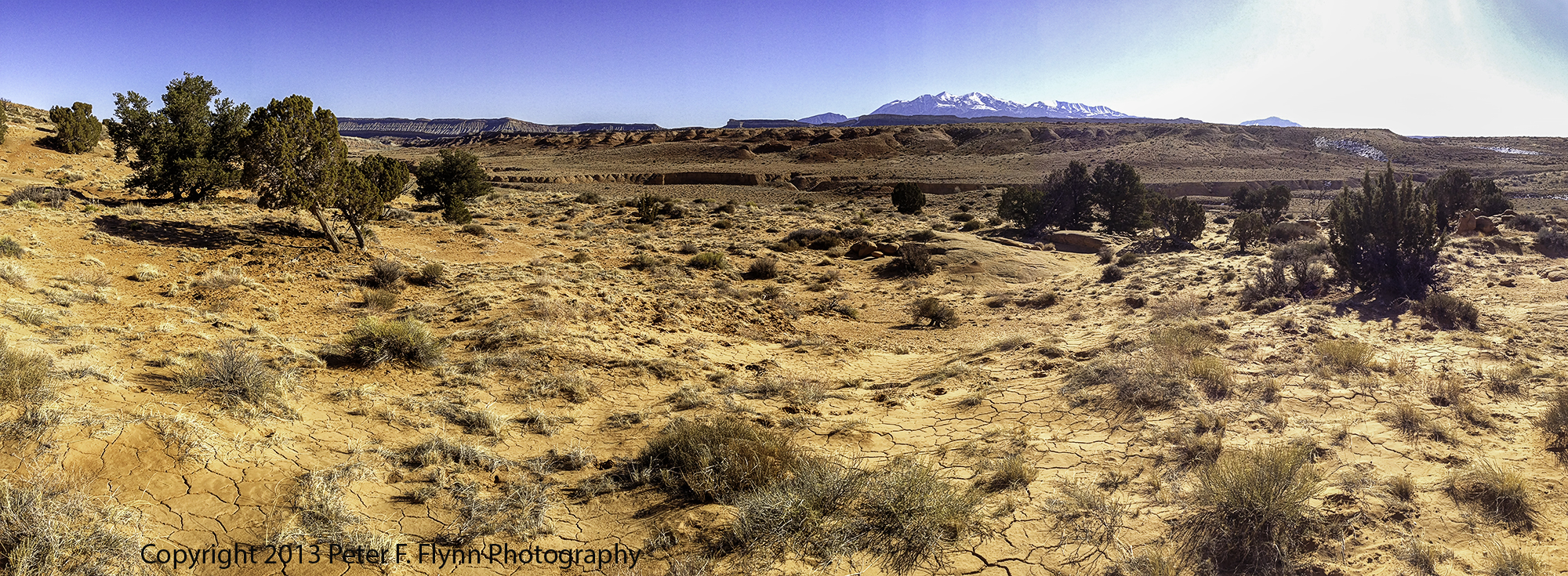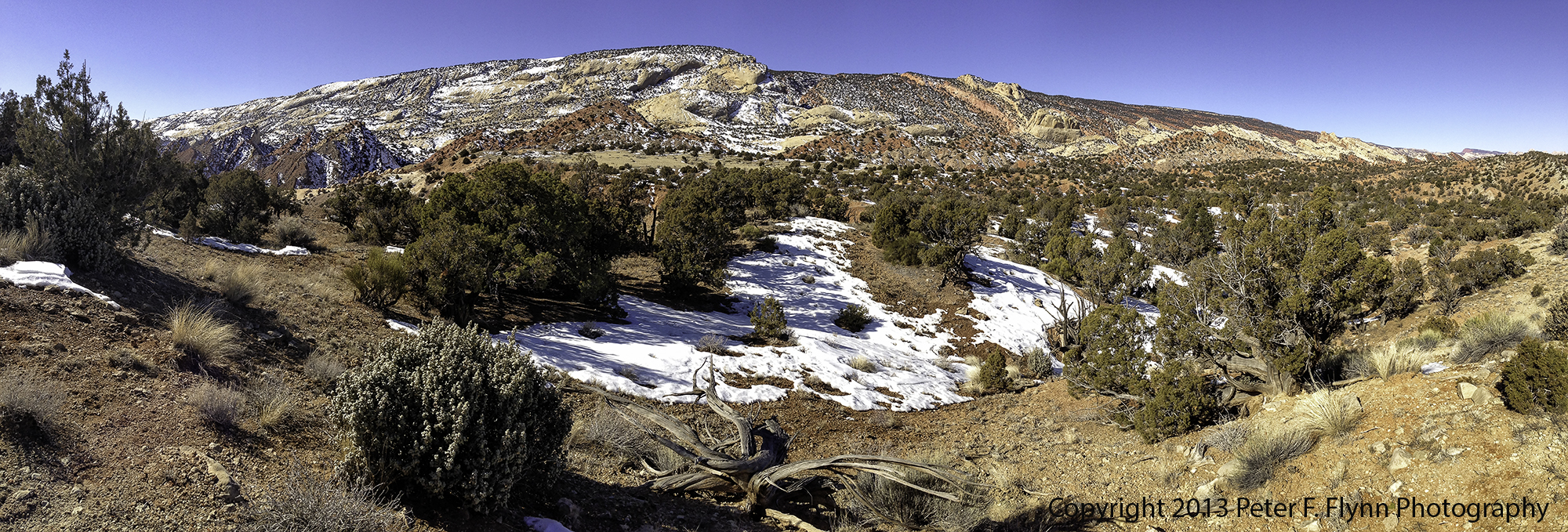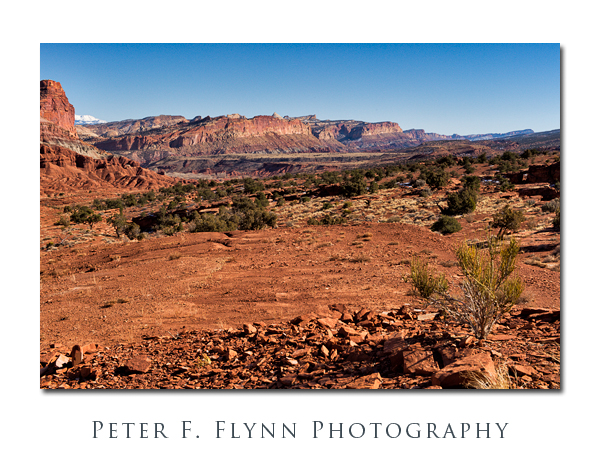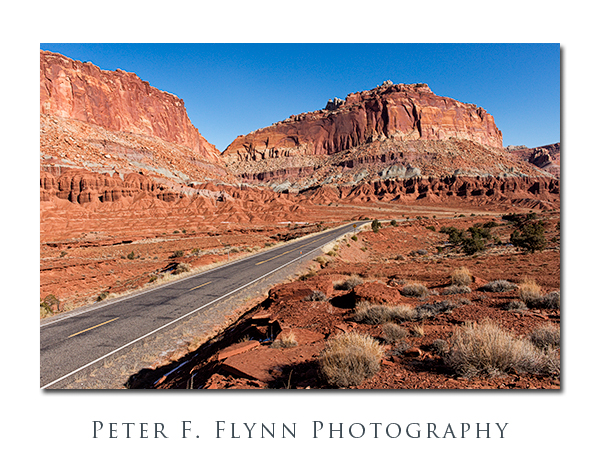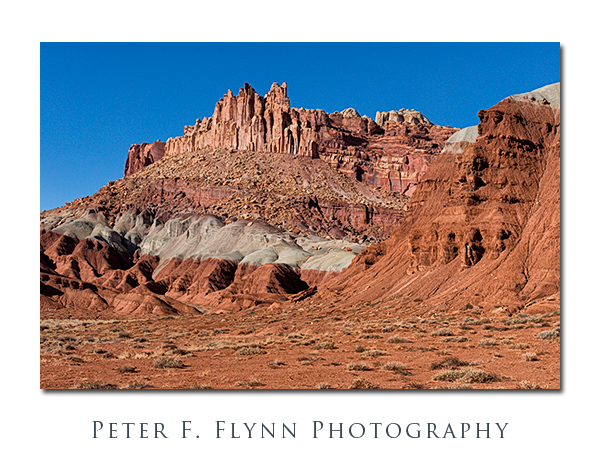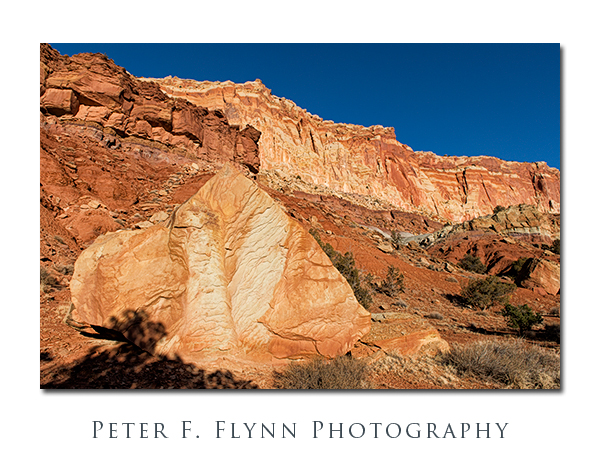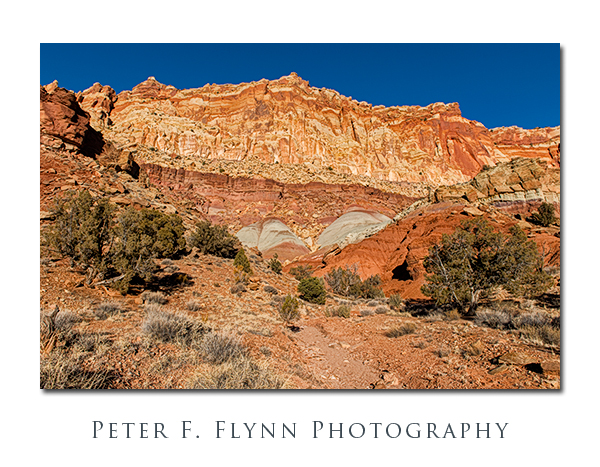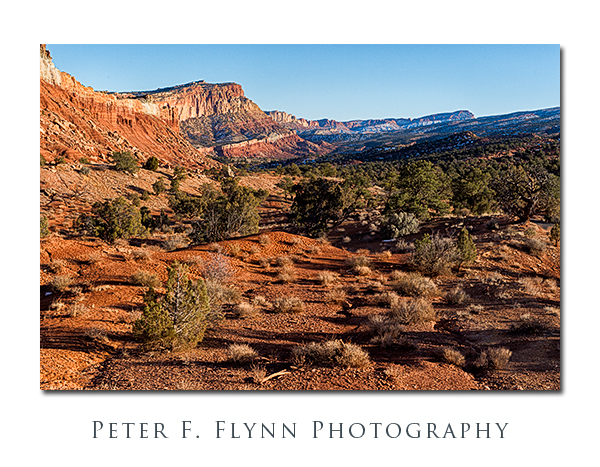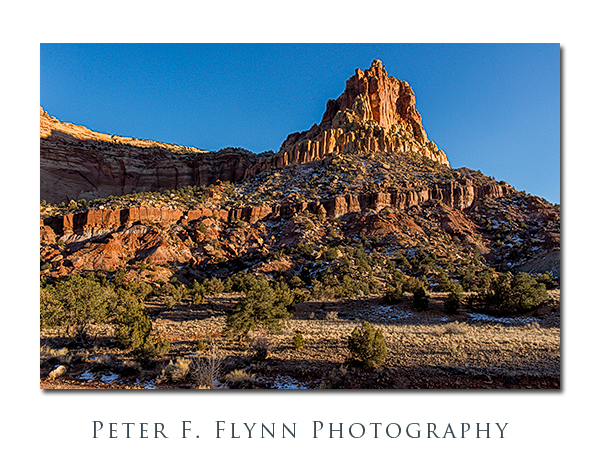Remarkably, many visitors to Capitol Reef never get a good view of the sandstone domes from which the park derives its name. In fact it is quite easy to see this defining feature, which requires only a few minutes drive east of Fruita and down the famous Notom Road. The perspective from Notom Road is completely different from that found in the north or western sides and well-worth the adventure.
The image above, of the famous Capitol Domes, was recorded on February 16, 2013, at 9;30 MST, using the Nikon D800E and the 70-200mm f/2.8G IF-ED VRII lens at 105mm. Exposure was f/8.0 and 1/100s, +0.33 EV corrected in processed.
Capitol Reef is a relatively recent park (1971), that was developed rather slowly, starting out as a monument (1937), and slowly converted to NP status. A major reason for the slow development of the park was the existence of small private land holdings within key sectors. Even long after the park boundaries were established, private holdings continue to define travel around the park. There are a number of private holdings that lie between the Notom Road the park boundary – especially in the northern section of the Notom Road, just south of SR24. Here there are several medium-sized farms. In one of these we found the small band of wild turkeys shown above. Image recorded at 11:30 MST using the D800E and the 70-200mm at 200mm. Exposure was f/11 at 1/500s, ISO 400, +0.33EV corrected during the raw conversion.
The red-rock toothy edge of the reef makes a beautiful contrast against the blond Navajo Sandstone above. The reef faces towards the east towards Strike Valley, and the Notom Road lies in between. This shot, made facing west towards the reef, was recorded at noon using the D800E and the AF-S NIKKOR 24-70mm f/2.8G ED at 24mm. Exposure was f/16 and 1/320, ISO 800, +0.33EV corrected – no idea why I dialed that combination, should have been f/11, with ISO at 400, or maybe f/8, 1/640s and ISO at 400…
The shot above shows the condition of the road is winter – not too bad here, although there were sections became inundated with snow-melt around mid-day thus became pretty damned slippery. Travel on this side of the park is generally easy-going, but one should be prepared for all the mischief associated with off-highway driving. The colorful striated formation is the background is bentonite, which is visible in several areas on the east of of the park. Image recorded at 12:30 MST using the D800E with the 24-70mm lens at 62mm. Exposure was f/11 and 1/800s (+0.33 EV), ISO 400.
The Notom Road closes in on the reef as you travel south. To gain the best views of the reef it is often necessary to make a short hike over a low-lying ridge that runs parallel to the road. The images above and below were shot from the same location looking south and north respectively. Shots made at around 12:30 MST using the D800E and the 24-70mm lens at 34mm and 48mm respectively. Both exposures were made at f/11, with shutter speeds of 1/400s and 1/1000s respectively (+0.33 EV), and ISO values of 400 and 800 respectively. This is one of our favorite spots anywhere.
Finally, a good turn-around spot for visits to the east side of the fold is the junction with the Burr Trail. Here you can choose to continue along the Notom Road to the Bullfrog Marina (Lake Powell), or head west up the Burr Trail Road towards Boulder. The latter choice makes for an excellent loop trip back to Torrey and the park campground. The image below of the switchbacks at the beginning of the Burr Trail Road was recorded at around 12:45 MST using the D800E and the 24-70mm lens at 70mm. Exposure was f/11 and 1/800s (+0.33 EV), ISO 800.
Copyright 2013 Peter F. Flynn. No usage permitted without prior written consent. All rights reserved.
